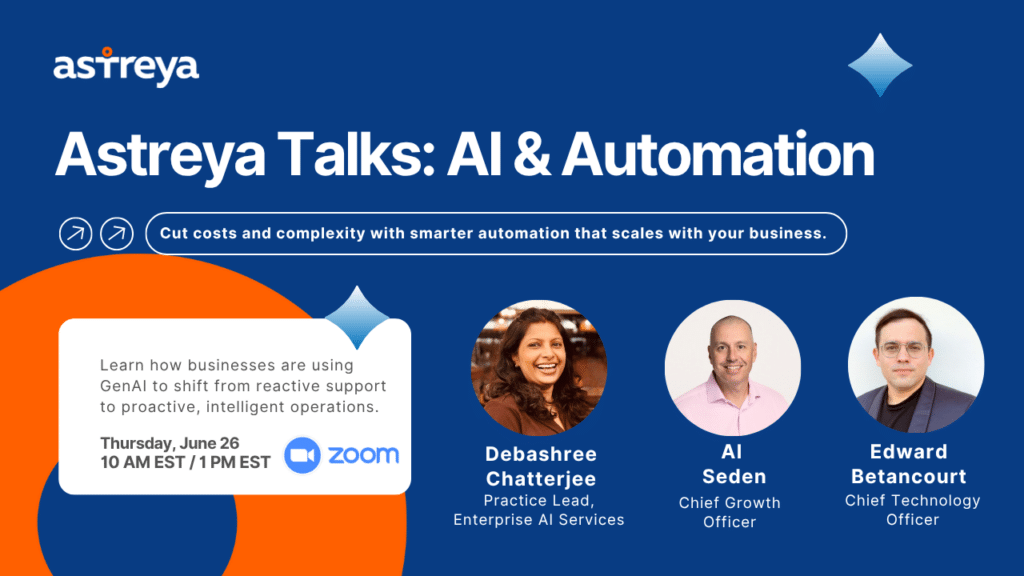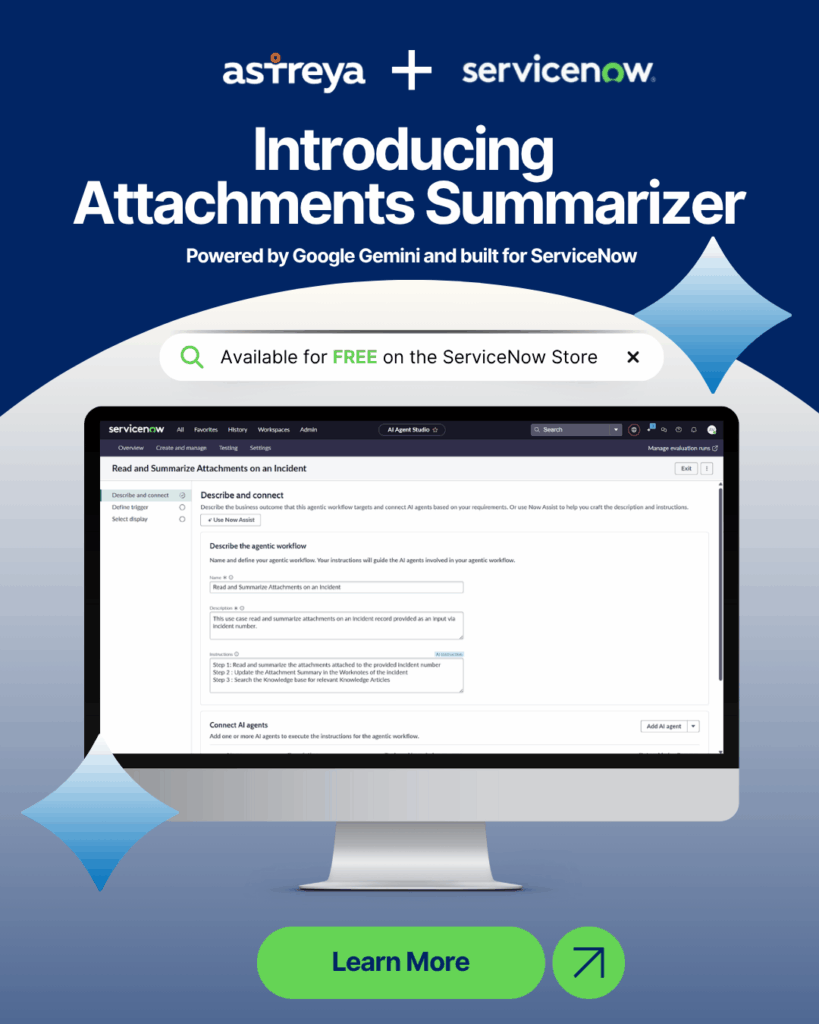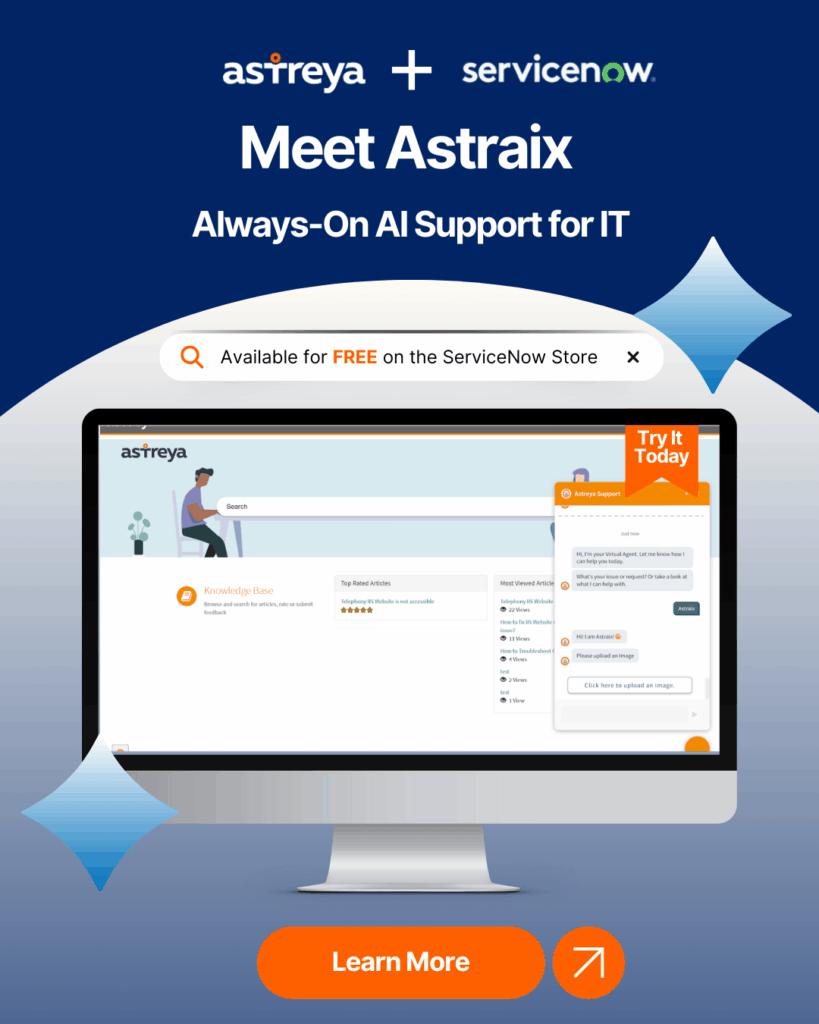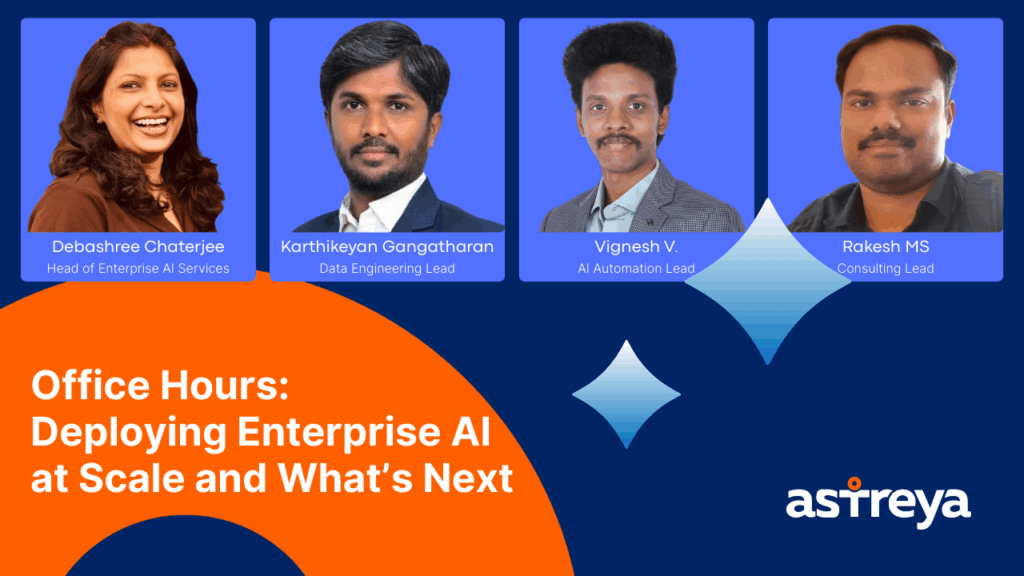
Everyone says they’re doing AI. But who’s actually doing it?
That question set the tone for Astreya’s recent panel on AI and automation. Led by Debashree Chatterjee (Practice Head for Enterprise AI Services), Edward Betancourt (Chief Technology Officer, and Al Seden (Chief Growth Officer), the session broke through the noise to deliver practical, grounded insight on what it really takes to implement agentic AI in enterprise environments.
The AI Noise Is Deafening. And IT Leaders Are Tired of It.
“They’re all saying AI-driven, AI-powered, generative, agentic… It’s making it really hard to understand fact from fiction,” said Al Seden.
That frustration is widespread. From hyperscalers to boutique service providers, everyone is suddenly branding themselves as AI-first, leaving enterprise leaders wondering who is truly delivering, and who is just riding the hype wave.
“Most of the clients we work with are CIOs, enterprise architects, and other senior IT leaders,” Al continued. “They’re all looking for clarity. There’s just a lot of confusion right now. The stock market is being driven by excitement around AI, and everyone—from software vendors to hyperscalers—is using the same terms: ‘AI-driven,’ ‘AI-powered,’ ‘generative AI,’ ‘agentic AI.’ They’ve all adopted it into their messaging.”
The result?
A marketplace crowded with products and services that claim AI capabilities, but few that deliver meaningful outcomes.
“Every company is effectively pushing a solution, their own solution, and asking their clients to invest in it. But our clients are asking, ‘What’s the best solution for me? What outcomes will this actually provide?” – Al Seden, Chief Growth Officer
The Growing Skepticism Around AI Claims
At the heart of this frustration is a growing skepticism.
“What’s more dangerous,” Debashree noted, “is the lack of standard definitions. Without clear benchmarks, anyone can slap ‘AI’ on their product, regardless of what feature really is needed for the scope or objective.”
“I attended a Gartner conference a few weeks back. A consultant there told me they had over 2,000 AI agents. That got me curious. I asked what they meant, and it turned out they were labeling simple script-based bots as ‘AI agents.” – Debashree Chatterjee, Head of Enterprise AI Services
This kind of misrepresentation isn’t just misleading; it can be harmful. Enterprises that invest based on inflated or inaccurate claims risk wasting resources, undermining trust in AI initiatives, and failing to meet internal stakeholder expectations.
That’s why we believe it’s the responsibility of solution providers to cut through the noise. “We need to give our customers unbiased, transparent insights,” said Debashree. “That means evaluating what they already have, what their ecosystem looks like, and what solutions actually make sense.”
AI should be about solving problems, with the right tools, for the right reasons.
What Makes an AI Agent Real? (And Why Most Aren’t)
According to Debashree, a real AI agent can learn from context, reason about unknowns, and react autonomously. That means it doesn’t just follow pre-programmed flows; it makes decisions in real time based on the situation and drafts a path dynamically.
“We need to really understand the true hallmark of AI agents,” she said. “It’s a system that can adapt to unknown scenarios, learn, and reason and react autonomously.”
That’s what separates agentic AI from rule-based bots. And that’s the future of enterprise automation.
At Astreya, our approach starts with evaluating what tools and platforms a client already has. “We don’t force a rip-and-replace. We design solutions that work with what the client has invested in,” said Debashree.
What Non-Deterministic Automation Really Means
One of the most powerful shifts happening in enterprise AI is the move from deterministic to non-deterministic automation. Simply put: traditional automation follows scripts; new AI agents adapt on the fly.
“With traditional automation, if you get a disk space issue, the system might delete files from a drive. But it doesn’t solve the root problem. With non-deterministic automation, the AI can analyze the environment, recognize a long-running job is creating massive log files, and terminate that job instead.” – Debashree Chatterjee, Head of Enterprise AI Services
That change matters. Not just technically, but financially.
“Before GenAI, we could automate approximately 30% of IT tasks. Now, we’re automating 60%, and seeing real 20% cost reductions in Level 1 support services,” she said.
AI Agents Are Already Here: 20 AI Solutions and Growing
“We’ve set up an AI Agent Factory,” Debashree shared. “We’ve built 20 agents across 29 IT domains using 80+ technologies.”
Some top use cases include:
- Root cause analysis agents for databases and networks
- Image and voice recognition agents that analyze error screenshots and voice notes
- Smart ticket assignment agents that factor in skills, availability, and workload
- Summarization agents that read attachments and draft technical updates
In a demo, Debashree walked through a simple example: a service desk engineer uploads an error screenshot. The AI agent extracts the error, identifies the issue, finds knowledge articles, and recommends a fix. Then, a second agent restarts the relevant service.
“This shows how multiple agents can collaborate in real time to drive resolution,” she said.

🎥 Want to catch the full conversation and see the AI agent demo in action?
Watch it on demand here: Watch now with passcode: %=$4vSYj
Trust, Hallucinations, and Human-Centric AI
As powerful as AI is, it isn’t perfect. One major risk is hallucination, when a model makes something up.
“Hallucination can create real business risk,” said Debashree. “Imagine AI misidentifying a root cause and triggering the wrong response. You could bring a system down or open a security vulnerability.”
To mitigate these risks, Astreya uses:
- RAG (Retrieval-Augmented Generation): AI agents pull from validated knowledge sources.
- Prompt engineering best practices to drive accuracy.
- Confidence scoring and fallback responses like “I don’t know.”
- Human-in-the-loop checks for any business-critical workflows.
“Human oversight is non-negotiable,” said Debashree. “Especially when you’re dealing with production systems.”
Start Small, Prove Value, Then Scale
So where should enterprises start? Al Seden says it best: “Pick an attainable use case. Define the outcome. And show the value.”
Edward Betancourt added that selecting infrastructure partners is key. “We work closely with ServiceNow and Google Cloud Platform, because they’re committed to long-term AI roadmaps. You need to think about whether you build or buy. The ecosystem is evolving too fast to go it alone.”
Debashree emphasized engineering discipline. “Whether you use open-source or commercial tools, the key is matching solutions to use cases. Don’t overbuild. Don’t chase accuracy for accuracy’s sake. Build what works.”
Astreya even offers a free AI Readiness Assessment, along with a self-service version that helps clients assess maturity and opportunity across data, workflows, and automation goals.
If you’re interested in taking the assessment, get in touch with us here.
How Astreya Is Leading the Next Phase of AI
“We’re not just talking about AI,” said Edward. “We’re building and deploying it.” That includes:
20+ AI agents in production and growing
A full AI and automation practice headed by Debashree
A new AIOps Workhub Platform set to launch in 2025
Integration with major marketplaces including ServiceNow and Google Cloud Platform
“We hired over 35 people in the past few months to scale this team,” added Al. “We’re not just keeping up. We’re pushing forward.”
Astreya’s AI Agents Now Available for FREE on the ServiceNow Store
1) Attachment Summarizer: Powered by Google Gemini and built for ServiceNow

What it does:
✅ Reads and summarizes attachments instantly
✅ Updates Worknotes for you
✅ Suggests the right Knowledge Articles
✅ Recommends real resolution steps
✅ Works across formats in real time
👉 Explore it now on the ServiceNow Store
2) Meet Astraix: Always-on AI Support for IT

Unlike basic chatbots that frustrate users with scripted responses, Astraix is powered by Google Gemini and built natively on ServiceNow. It doesn’t just understand what users are asking, it actually solves their problems faster.
Here’s how:
- Sees what users see: No need to describe the IT issue. Upload a screenshot of an error and get an instant diagnosis.
- Knows what to suggest: Pulls the right knowledge articles based on your actual issue.
- Routes intelligently: When escalation is needed, it creates tickets that get assigned directly to the right engineer.
- Learns continuously: Gets smarter with every interaction.
👉 Download Astraix for FREE from the ServiceNow Store
Bottom Line: Focus on Value, Not AI Hype
Don’t implement AI just to say you have it. Use it to solve real problems.
At Astreya, we focus on outcomes, not optics, which translates to:
- Faster time to resolution
- Reduced operational cost
- Higher agent productivity
- Better data for continuous improvement
Ready for Enterprise AI Implementation?
Contact us to take the Free AI Readiness Assessment and start your journey from AI confusion to clarity.
Missed Office Hours?
No problem. Watch the replay.
See what questions IT leaders and doers asked our AI experts. Chances are, their pain points sound a lot like yours.
